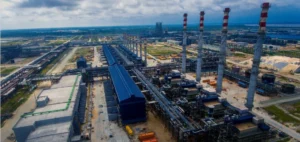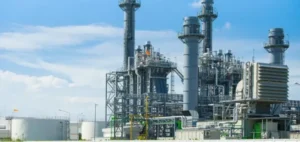Oil prices were still holding steady on Thursday, benefiting from a weaker dollar but still held back by concerns about U.S. growth.
Around 09:30 GMT (11:30 in Paris), the barrel of Brent North Sea for delivery in June took 0.06% to 87.38 dollars. Its U.S. equivalent, a barrel of West Texas Intermediate (WTI), for delivery in May, gained 0.12% to 83.36 dollars. Prices were supported “by the evolution of expectations and market forecasts regarding … the Fed’s monetary policy” (U.S. Federal Reserve), says James Harte, analyst at TickMill.
Inflation in the US slowed sharply (to 5% in March year-on-year, from 6% in February year-on-year), reaching its lowest level in almost two years according to the Consumer Price Index (CPI). The data raises “doubts about whether the Fed will raise rates next month” and reinforces the idea that the institution is “near the end of the rate hike cycle,” says Fawad Razaqzada of City Index.
This prospect supports oil prices, which benefit from a weaker dollar. The depreciation of the U.S. currency encourages purchases of oil, denominated in greenbacks, making them more attractive to investors using other currencies. “The possibility of a recession in the United States later this year” has not yet been ruled out by investors, who remain cautious, James Harte points out. “If there were signs of slower growth, oil prices would likely suffer,” he continued.
On Tuesday, the International Monetary Fund (IMF) had slightly revised downwards its global growth forecast for 2023. A day earlier, oil prices were boosted by comments from U.S. Energy Secretary Jennifer Granholm, who said the U.S. soon wants to bring strategic petroleum reserves (SPRs) back to pre-Ukraine war levels, according to the financial press. “She did not specify when and if (the U.S.) would buy at levels different from those it has reported in the past,” namely if crude fell into a range between $67 and $72 a barrel, notes Edward Moya, an analyst at Oanda.
RPDs are currently at their lowest level since the early 1980s.






















